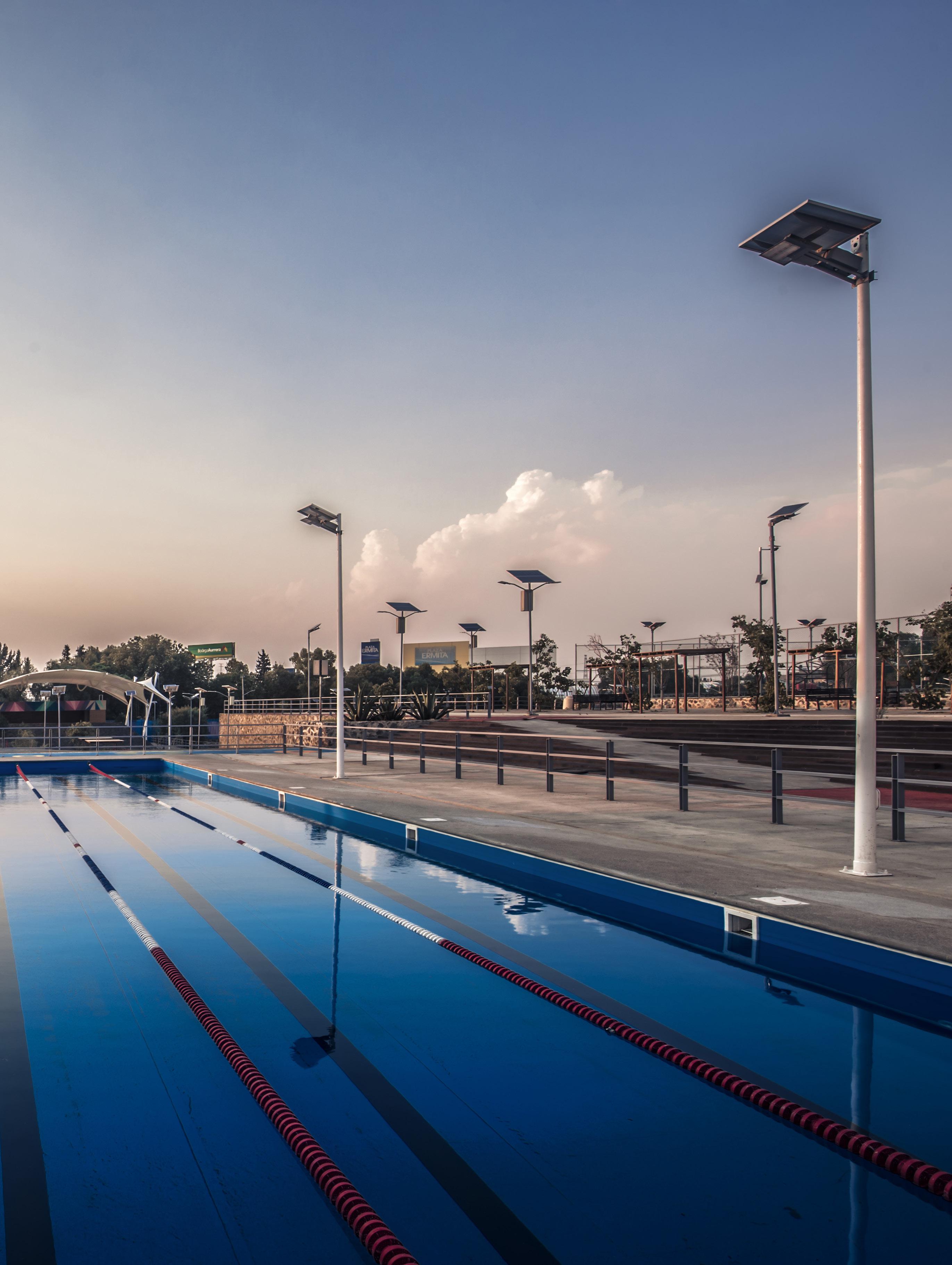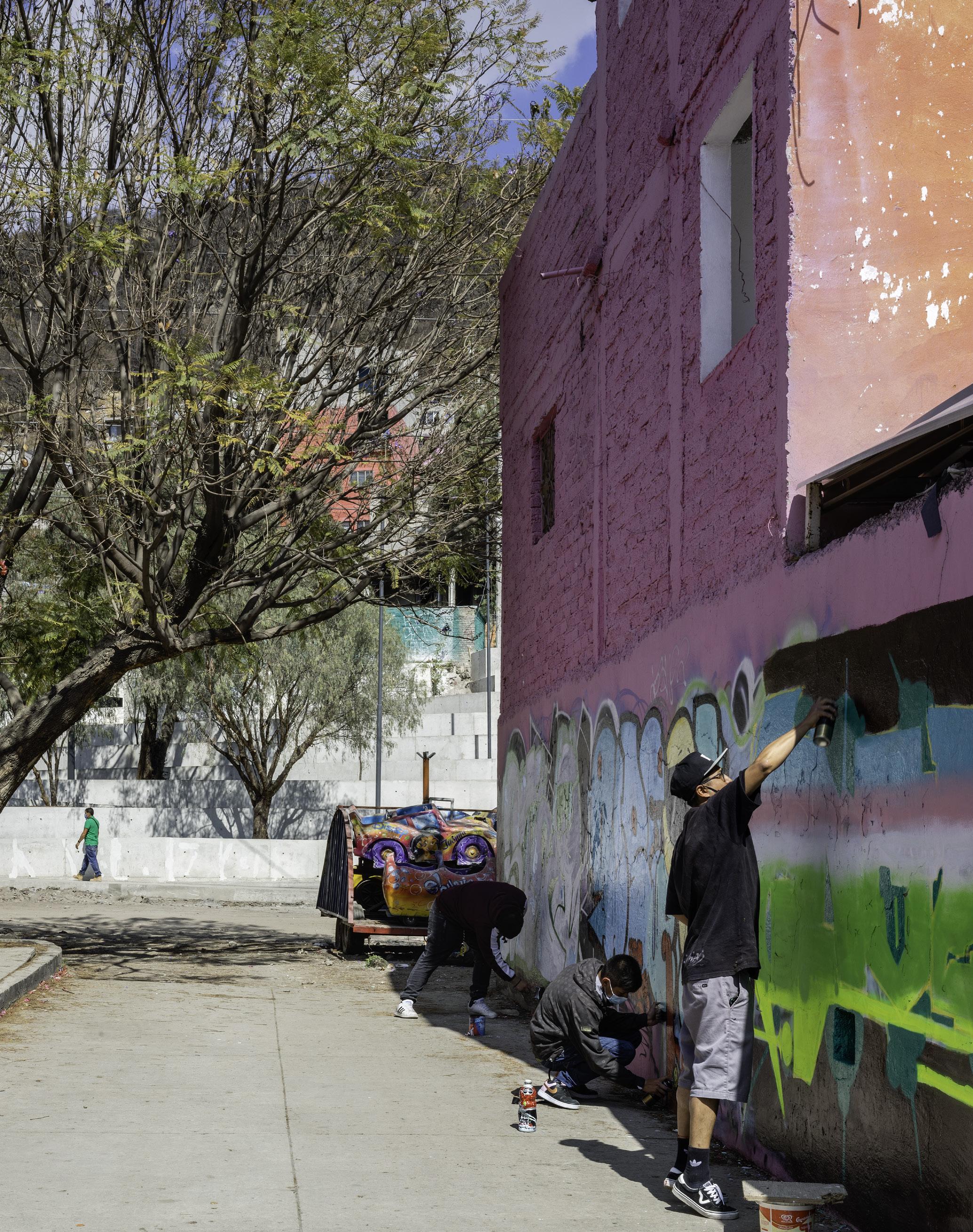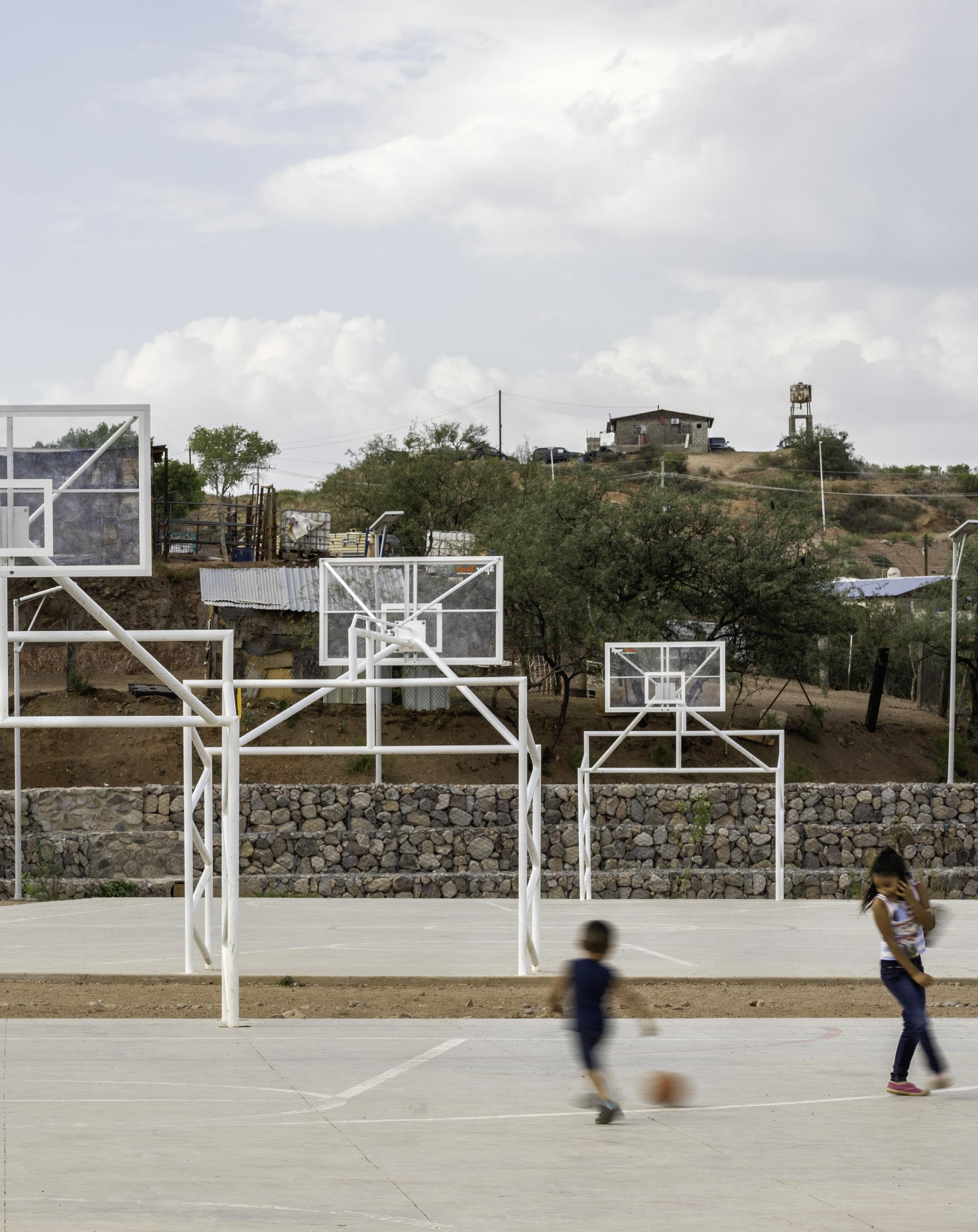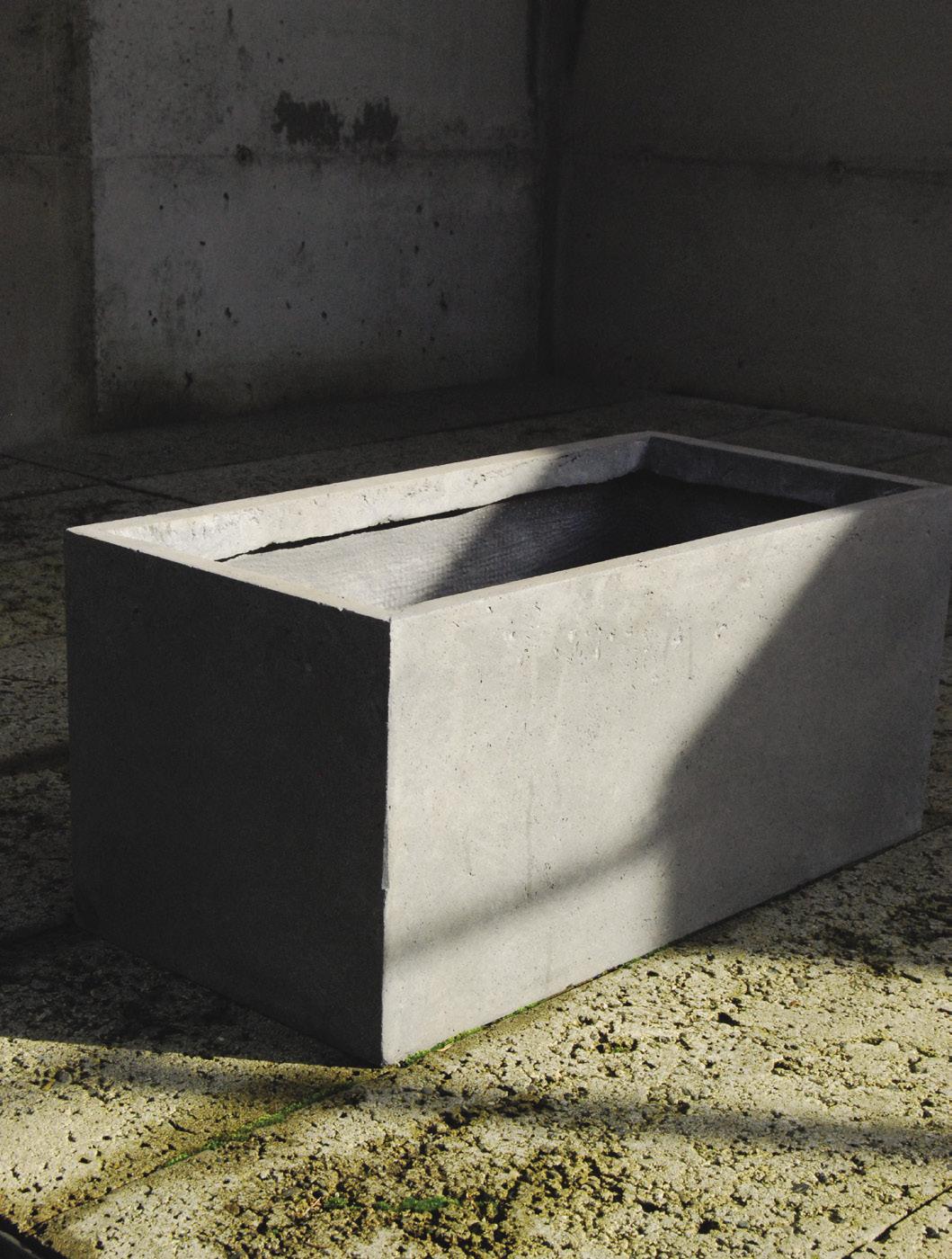
6 minute read
CHANGEMAKER
COMMUNITY CONSCIOUS
Working with the mindset of “public space as infrastructure,” the architects at Taller Capital are using their projects to improve communities, and water-management systems, around Mexico.
Written by Natalia Torija Nieto
GUILLERMO MENDÍA La Quebradora Park, finished in 2012, was designed by Taller Capital in collaboration with the Universidad Nacional Autónoma de México in the municipality of Iztapalapa in Mexico City.

Tenochtitlan, a settlement at the center of what is now Mexico City, was established on the central valley lakebed of Texcoco in the early 14th century. There, the Aztec empire developed a complex and extensive infrastructure around water systems— specifically, an arrangement of canals, dikes, and aqueducts that supplied water for things like irrigation and bathing. Beginning in the 1500s, European colonizers arrived and drained the lakebed, an act that radically transformed the continued shaping and planning of the capital— from its streets and civic plazas to its residential neighborhoods—for centuries to come.
“The Spanish colonists followed the Laws of the Indies issued in the
16th century, which called for urban design as a transferable grid over an unimaginably diverse territory,” says Loreta Castro Reguera, a Mexico City–based architect and cofounder of design firm Taller Capital, which she started with architect José Pablo Ambrosi in 2010. Urban planning in Mexico, she says, “requires a careful reading of the [historical] context and for us to unlearn what we have embedded in our heads from the 20th century; that matter of ‘the architect in command of the territory,’ which to me is a constant struggle.”
Over the past decade, Ambrosi and Castro Reguera, who both graduated from the Universidad Nacional Autónoma de México (UNAM) in Mexico City, have been grappling with such considerations as they’ve used their design work to address social, political, and humanitarian issues surrounding water and the revitalization of struggling communities in the area.
Before founding Taller Capital, Ambrosi studied under architect Carlos Ferrater at the Polytechnic University of Catalonia in Barcelona, while Castro Reguera completed her degree at the Università della Svizzera Italiana’s Academy of Architecture in Mendrisio. She received a master’s degree in urban design from the Harvard Graduate School of Design and was awarded the Druker Traveling Fellowship, which allowed her to conduct research worldwide in cities designed with integral water-management systems. She has also led architecture seminars at UNAM for over 10 years; these function as research engines that reveal structural vulnerabilities in Mexico City, particularly those related to water.
Castro Reguera and Ambrosi’s research has been focused on finding the intersection between architecture and infrastructure, specifically in ways that replenish the regional water aquifer and activate community spaces in an effort to raise awareness of the environmental crisis and water shortage. As a result, Taller Capital has developed several decentralized urban-improvement projects in and around Mexico City. “We like doing small-scale interventions that subscribe to an infrastructure solution and to a paradigm shift in people’s imaginations,” Ambrosi says.
One successful collaboration from 2012 saw Taller Capital partner with UNAM’s Manuel Perló, PhD, to »

Loreta Castro Reguera and José Pablo Ambrosi, the founders of Mexico City–based architecture firm Taller Capital.

PORTRAIT: PEDRO LANGRE; RAFAEL GAMO
Finished in 2020, Bicentenario Park, as seen from a side street, is located in Ecatepec de Morelos, State of Mexico.
develop a research project that later led to the design of the Parque Hídrico La Quebradora, a public park with an integrated rainwater-filtration system in Iztapalapa, a marginalized and crime-ridden borough of Mexico City. The project was the first of a series of similar public commissions that created well-designed community spaces while also addressing vital hydrological components. In Ecatepec, State of Mexico (about 10 miles north of downtown Mexico City), the architects discovered that the municipality’s location on the hillside of the Sierra de Guadalupe, which is prone to landslides and flooding, was conducive to filtering water through a stepped-terrace system. “We built concrete retaining walls that hold local tezontle volcanic gravel, which works as a sponge that retains rainwater, slowly filtering it down into the subsoil,” Ambrosi explains. “Mountains are like the cisterns of the planet,” Castro Reguera adds. “You are returning the water to the mountain, and it will gradually reach the aquifer.”
Similarly, in Tijuana, a dry debrisfilled riverbed was transformed into a public space featuring a terraced concrete landscape connected through slanted rubber-tire walls or llantimuro, a regional construction system. “[The park] connects the two sides of the ravine and solves many issues of segregation and ruptured urban layout,” Castro Reguera says. And, in the United States–Mexico border city of Nogales, Sonora, the architects—guided by their motto “public space as infrastructure”— designed a system of concentric stepped ledges (made from gabions: wire frames filled with rocks) around the perimeter of an existing dam to prevent flooding. An easily identifiable, triangle-shaped roof over an open-air portico nearby serves as a landmark that reminds the community of the importance of this body of water.
Castro Reguera admits that most public programs are governmentsponsored, like a current project the firm is working on for a strip of land that sits under high-voltage lines in Cuautitlán Izcalli, State of Mexico. According to Castro Reguera, the strip divides a neighborhood, with an informal community living on a slope prone to landslides on one side, and a middle-class gated community with amenities and nicely painted houses on the other. “We proposed a space that could become a place for integration and a mediator between two social classes,” she says. The plan includes a public park with a walking circuit, gardens, and a water-reclamation system that will treat residual waters to provide landscape irrigation throughout the year.
Additional projects in the works include the rehabilitation of the city center of Iguala, Guerrero, and the development of a model for quality affordable housing in the Mexico City borough of Tláhuac—a new breed of subsidized projects. Historically, subsidies have funded massive, poorly built housing-block projects that lack easy access to basic necessities such as grocery stores, hospitals, and public transportation. But in this case, “we have been asked to provide housing in a dignified way for people who otherwise could not afford to live in the city and would be expected to self-build an informal home in the outskirts,” Ambrosi explains. “The fact that these are subsidies does not mean it has to be ugly or unworthy housing.” What’s more, “this is a project in which we seek good habitability while also solving water problems and environmental issues,” Castro Reguera adds. “We know that architecture does not solve social problems, but it does help solve them; that we can vouch for [because] it gives people a sense of identity, dignity, and community.” h
RAFAEL GAMO

At a park in the United States–Mexico border city of Nogales, Taller Capital used gabions around the perimeter of an existing dam to prevent flooding.



Landscape Design and Installation Architectural Planters for Commercial and Residential Applications 517 E Pike Street Seattle WA 98122 206.329.4737 www.ragenassociates.com

REMASTERED
Interior designer Michelle Dirkse brings midcentury glam to Seattle, and architects Brett Woods and Joseph Dangaran pay homage to Los Angeles’ architectural heritage.











